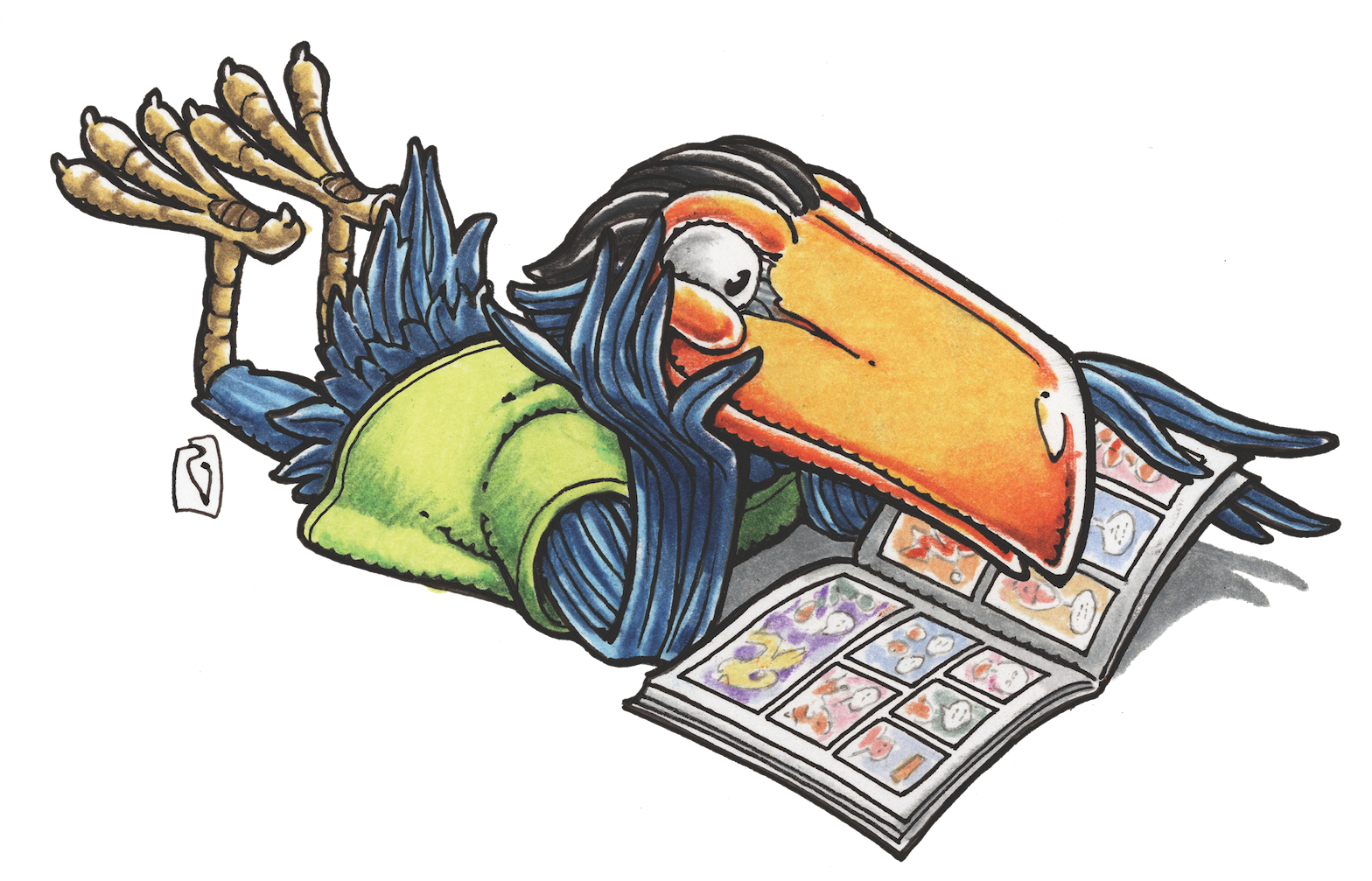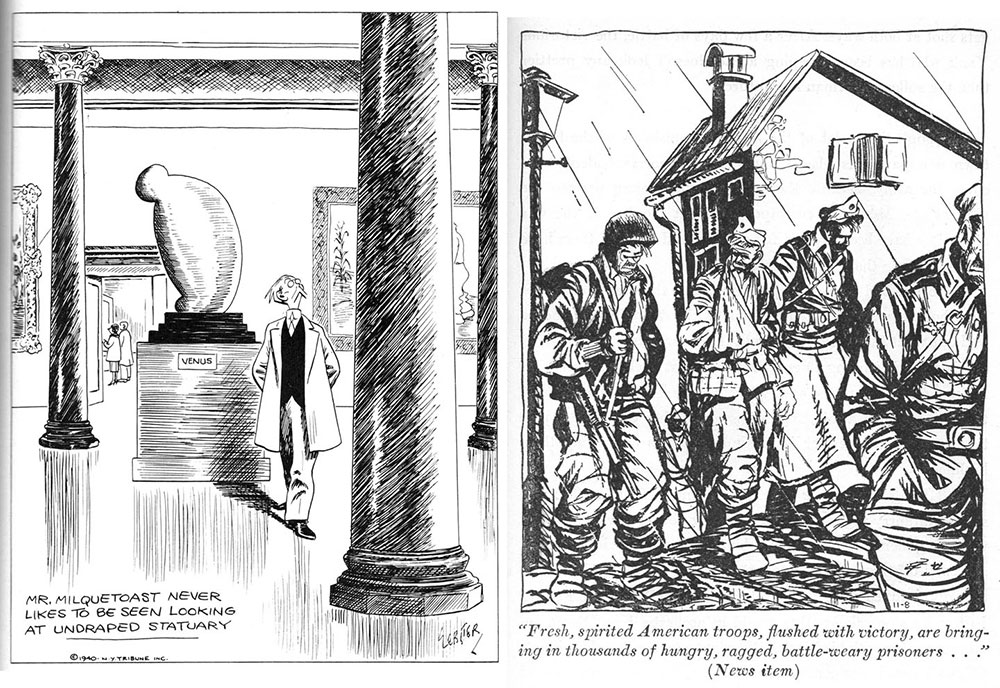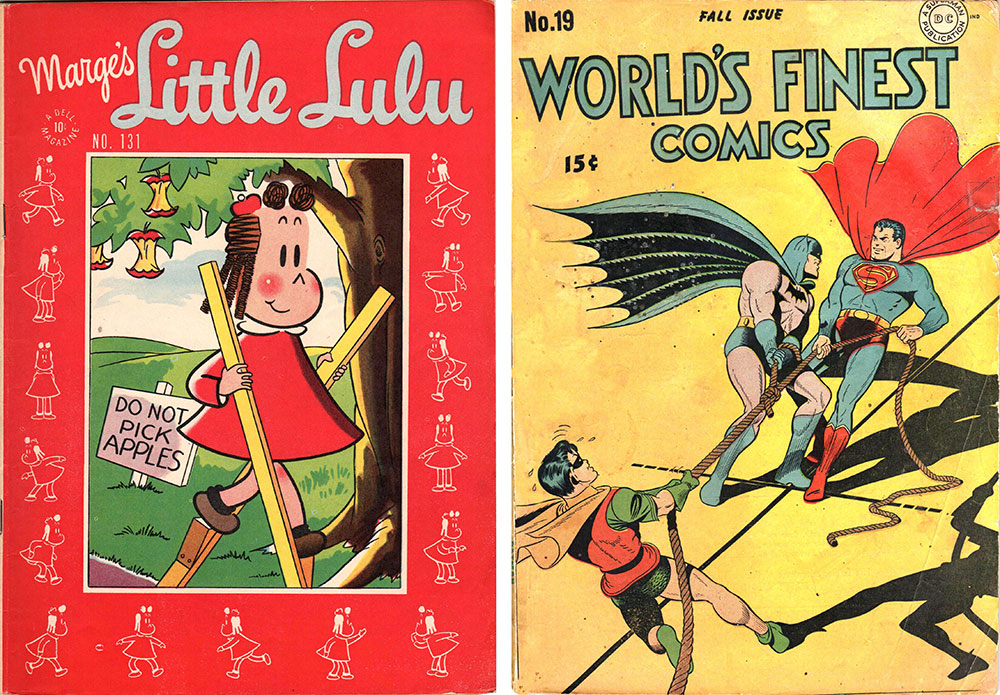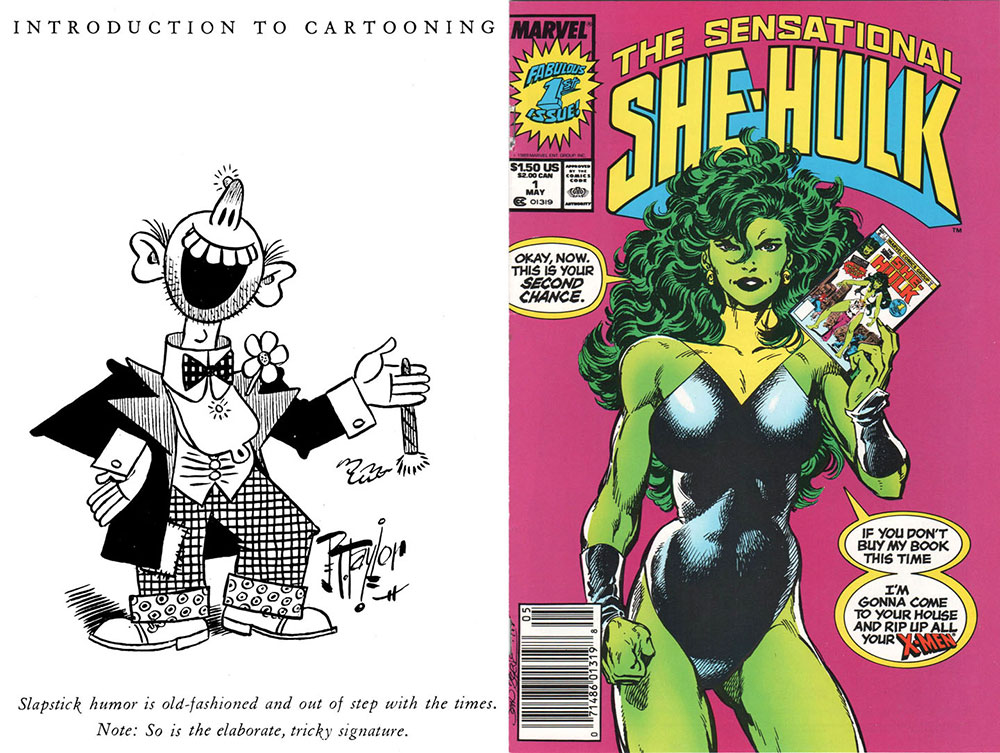MAGGIE’S WORLD BY MAGGIE THOMPSON
Maggie’s World 071: Gag Cartoons

When Don and I began our Comic Art fanzine in 1960, we named it that because we were fans of all sorts of comics—including magazine cartoons, daily newspaper panels, stand-alone comic-book-cover gags, and similar varieties.

The gag cartoon is in a category by itself: standing alone to evoke a reaction. On the other hand, it joins other comic art in that it can be the result of a collaboration. Whereas the cartoonist is most often identified as the gag-cartoon creator, some gag cartoons are a team effort. New Yorker cartoonist Helen Hokinson often produced art captioned by others, especially James Reid Parker. Among the most famous New Yorker cartoons is a 1928 Carl Rose image of a mother and cherubic child at the dinner table. But the caption—“It’s broccoli, dear.” “I say it’s spinach, and I say the hell with it.”—was by E.B. White.
Heck, more than a decade ago, All Things Equal, Inc., offered The New Yorker Cartoon Caption Game. Players looked at a cartoon, and they had to come up with their own captions. “We provide the ink. You provide the think.”
Themes
Some gag cartoonists specialize in themes for their stand-alone humor.
They’ll Do It Every Time by Jimmy Hatlo (1897-1963) in newspapers and Famous Last Words by Irwin Caplan (1919-2007) in The Saturday Evening Post became comedic catch phrases.
H.T. Webster and J.R. Williams produced stand-alone cartoons in a number of themes. Webster was known for such captioned themes as “How to Torture Your Husband,” “How to Torture Your Wife,” “The Timid Soul,” “To Hell with Fishing,” “Life’s Darkest Moment,” and “Who Dealt This Mess?” Williams’ themes in his Out Our Way panel included “Born Thirty Years Too Soon,” “Why Mothers Get Gray,” and “Heroes Are Made, Not Born.”
Other single-panel cartoons featured the adventures of a primary focal character. Through History with J. Wesley Smith by Burr Shafer ran in Saturday Review of Literature. The jacket flap of a 1950 collection began, “This is an unusual cartoon book because it presupposes, believe it or not, that people still can read.” (“Smith” involved himself in famous events—as in advising, “But these ridiculous fairy stories, Aesop. Why not spend your time on serious literary endeavor that will last?”)
Hazel and Dennis the Menace featured characters with such individuality that they were easily adapted for TV series. The same goes for the Addams Family characters created by Charles Addams. Henry and Little Lulu gained their own comic book series, with full stories developed by other creators.
Challenges
The panel cartoon faces some of the same concerns as other humor. In his Backstage at the Strips, Mort Walker noted, “A certain amount of irreverence and disrespect is enjoyed by the public; they may even egg you on. But don’t slip.” He continued with a number of examples of syndicate changes to its strips and panel cartoons and showed what was perceived by many as a stereotyping gag in a Dennis the Menace panel—one that resulted in a public apology from The Cleveland Press, “Yesterday’s Dennis the Menace cartoon offended a number of Press readers. The Press apologizes for the affront caused by the cartoonist. It assures subscribers that such a thing will not happen again.”
Dave Breger edited a mass-market Bantam Books paperback in 1955 titled But That’s Unprintable, in which he collected “135 hilarious cartoons they wouldn’t dare publish!” It had a few printings but never saw later editions, though it was far more than a mere accumulation of “naughty” cartoons. Breger said he was writing about “the more or less funny cartoons in the [mass-circulation] American magazines and newspapers.” He wasn’t even writing about what he called “the cartoons in specialized magazines like the New Yorker and Esquire.” The focus was rejected submissions by cartoonists aiming at a family audience but rejected by their publishers.
At the end, he offered a “What’s My Taboo?” quiz, in which he printed seven cartoons with a multiple-choice option of the censor’s reasoning. He led with one of his own rejected “Mr. Breger” gags in which “Mr. Breger,” looking at the Agesander statue of Laocoön and His Sons in the coils of two sea serpents is saying, “Oh, yes, I gotta change the ribbon in our typewriter.” Options given were (a) it shows nude figures; (b) not enough people might know what the statue group represents, (c) it shows snakes; and (d) The National Association of Typewriter Ribbon Manufacturers might object. The answer was “c,” snakes “are taboo in cartoons (octopuses are okay).”
And, of course, challenges are even more formidable when it comes to political cartoons.

Another challenge is the changing market itself; many magazines have left newsstands. Most obvious of those that remain are the New Yorker, Reader’s Digest, and Playboy, but did you know that a number of today’s business publications also carry (and are markets for) cartoons? They include Harvard Business Review and Barron’s.
Beyond the gags
The skills that produce memorable cartoons can lead to careers beyond one-shot images on the page.
Some gag cartoonists went on to teach. Henry creator Carl Anderson offered a course in cartooning and eventually came up with How to Draw Cartoons Successfully in a variety of formats in the 1930s and 1940s. New Yorker cartoonist Richard Taylor produced Introduction to Cartooning in 1947.
Such cartoonists as Shel Silverstein, Syd Hoff, Stan and Jan Berenstain, and Dr. Seuss became better known in careers featuring more than stand-alone panels.

Sequential art
Will Eisner coined the term “sequential art,” and there have been discussions over whether stand-alone gag panels qualify as “sequential art.” Given that there’s a mental sequence on the part of the reader, it seems logical to accept that, not only is there often a question as to how events led to the situation, but there is often also a future that is left to the imagination. Or, as Gary Larson put it in The PreHistory of The Far Side (1989), “Cartoons are, after all, little stories themselves, frozen at an interesting point in time.”
Consider what led up to John Byrne’s cover for Sensational She-Hulk #1—and what the goal of his gag was.
The proverbial bottom line
Is it funny? Is it understandable? Where do we go from here?
Taylor cautioned, “The amateur almost always tries for very complicated or ‘clever’ ideas upon which to base his drawing. The professional knows that the idea for a good cartoon is most effective when quite simple and direct, and that ‘clever’ ideas have a habit of falling flat. … Many a very funny cartoon has been based on an extremely slight idea. … The humorist is one who looks for the absurd side of life and his attitude amounts to a habit of thought.”
Larson included instances of cartoons going a bit wrong—among them, a Far Side cartoon that had been adjusted to fit on a newspaper page. “I opened the newspaper to the comic section and discovered that someone, in order to compress the cartoon’s size, had chopped off a rather vital part of the humor.
“The newspaper ran a correction the following day but, all in all, it’s sort of nice for a change when no one understands one of my cartoons but it’s not my fault.”
These days, panel cartoons—and captioned photo gags—have found online homes, too. Twitter has cartoon Tweets from @SandyBoynton and photo-captioned Tweets from @catalogliving, among many others. Where and how will future such gag creators reach us? Get ready for the fun!
Maggie’s World by Maggie Thompson appears the first Tuesday of every month here on Toucan!